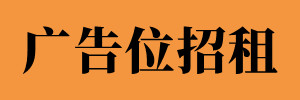|
|
Q:请教下做LED灯丝的朋友,陶瓷灯丝在焊接中易掉怎么办?客户说用蓝宝石的都没问题4 p3 F6 ~( ^ j* d$ i& P0 z* O
 * ]" Q- D' |9 C* L * ]" Q- D' |9 C* L
A:用焊锡肓,钨丝灯加工灯丝的时候,破损率很高。2 d, q3 o0 D8 a) m, I7 C8 Z
Q:现在大多数用的都是陶瓷吧 有这个问题吗3 R0 \. @1 `3 w" L
A:这不冲突
+ Z z& l( A4 [7 ?1 B5 `* ?Q:市场上用陶瓷的都用焊锡膏吗?
0 r( j( A# M9 d& K% @1 vA:陶瓷灯丝主要优点是耐热耐高压,主要缺点在加工难度,你客户出现这样的情况也正常啊。你把这段发给客 户看看:
; a8 ^8 F: z5 @% v: `8 I9 uCeramic is a promising new LED substrate technology. One advantage is its ability to withstand high heat levels extremely well. Another advantage is its high voltage operation. However, there are a few concerns with the ceramic approach. Unlike sapphire, ceramic requires several additional preparation steps. For example, deposition of nickel/silver mirror on the p-contact layer, titanium/aluminum/indium/gold for flip-bonding to the ceramic AlN substrate, and “lift off” of the epitaxial material that is transferred onto the ceramic substrate. All of these steps adds cost and create potential reliability issues, which in turn, withdraws some of the ultimate cost savings from the lower cost ceramic material. Another problem is the tendency for the bonding to delaminate from the epi-layer in a high heat environment. When heat is not managed well, problems ensue. Additionally, since ceramic material is hard and brittle, one failure mode consistently observed by the lighting industry is the stress cracks on ceramic- substrate-based LED caused by flexing of the printed circuit board.
/ U1 b8 ~4 ?' G" H |
|
 |LED盘
( 粤ICP备18067418号 )
|LED盘
( 粤ICP备18067418号 )
 <
<




















 发表于 2016-7-26 00:54:15
发表于 2016-7-26 00:54:15
 * ]" Q- D' |9 C* L
* ]" Q- D' |9 C* L